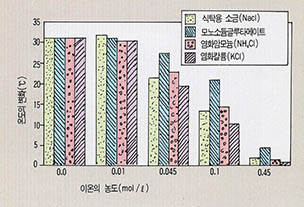결국 모든 것들은 최후를 맞아야만 한다. 여러분과 나, 인류 전체, 그리고 지구 그 자체까지도. 그러나 그 최후는 어떠할까? 과학자들은 그러한 일들에 관해 추측해오고 있다. 내가 가장 최근에 찾아낼 수 있었던 시나리오로서 한 가지 가능성을 여기에 소개한다.
앞으로 핵전쟁은 일어나지 않는다고 가정하자. 현재 우리가 직면하고 있는 모든 문제들을 해결할 수 있게 된다고 가정하자. 인간의 육체와 정신을 개선시키는 방법을 알아내어 우리스스로를 더욱 강하게, 건강하게, 그리고 현명하게 만들 수 있다고 가정해보자. 그렇게 된다면 우리는 영원히 살아갈 수 있을것인가? 우리와 우리의 후손들은 계속 진화를 거듭하고, 우리의 사랑스러운 행성을 가꿔가면 영원한 에덴동산을 기대할 수 있을 것인가?
그렇지 않다. 그것은 불가능하다. 우리의 문제는 태양이다. 지구와 달리 태양은 조용하고 평온한 구조를 갖고 있지 못하다. 지구의 중력은 지구를 가능한 한 압축시켜 왔고, 그대로 놔둔다면 무한히 지금의 상태대로 있을 것이다. 하지만 태양은 거대하며 그 중력이 태양을 난장이와 같이 만들수 있다. 그러나 태양은 그 중심에서부터 끊임없이 열을 발생시키고 있기 때문에 붕괴하지 않는다. 이 열은 태양이 자신의 중력수축으로 인해 붕괴되는 현상을 막아준다.
이 열은 매초 태양의 수억톤에 달하는 수소원자들(태양질량의 75%를 구성하고 있다) 이 보다 복잡한 헬륨원자들과 융합되기 때문에 발생한다. 이러한 융합반응은 열을 발생시킴으로써 태양으로 하여금 꾸준하게 커지는 뜨거운 헬륨핵을 갖게 해 준다.
태양은 매우 많은 수소원자를 가지고 있기 때문에 50억년의 융합이 지속된 후에도 여전히 많은 양의 수소를 갖게 된다.
그럼에도 불구하고 모든 것들이 결국에는 최후를 맞게 된다. 50~60억년이 지나면 태양의 수소는 감소하게 되고 헬륨핵은 위험할정도로 거대해지며 뜨거워질 것이다. 헬륨원자가 보다 더 복잡한 중원소들로 융합하기 시작하는 점에 도달하게 될 것이다. 갑작스럽게 열의 흐름이 증가하고 태양은 팽창하기 시작할 것이다. 그것은 더욱 커지고 가장 바깥층은 식어갈 것이다. 태양표면은 백색열로부터 단순한 적색열로 식어 가고 마침내 '적색거성'이 돼 버릴 것이다.
태양의 맨 바깥층이 식을지라도 그 덩지는 매우 커져서 지구에 도달하는 전체 태양열은 태양이 팽창함에 따라 늘어나게 된다. 태양이 그 최대크기에 이르기 훨씬전에 지구는 그을려 타고 불모가 되어 지구상에는 어떤 생명도 남지 않을 것이다.
태양이 가장 커질때의 크기는 얼마나 될까? 내가 가장 최근에 추정해 본 크기는 지름이 2억마일 약간 넘는 것이었다. 이것은 태양이 지구의 전체 공전궤도를 가득 메우거나 궤도크기를 약간 넘어서리라는 것을 뜻한다. 결국에 가서 지구는 태양표면으로부터 약 7백만마일 안쪽에서 태양의 중심을 공전하게 될 것이다.
물론 그것이 생각만큼 그렇게 나쁜 상태는 아니다. 적색거성의 가장 바깥층은 매우 얇아 거의 진공상태나 다름없다. 이 부분의 온도가 여전히 화씨 1500˚정도로 높기는 하지만 그 곳에 존재하는 물질의 양은 매우 적어서 지구를 녹여버릴 정도로 충분한 열을 발생시키지는 못할 것이다. 우리는 지구를 태양의 가장 바깥 가스층사이를 돌고 있는 녹아 없어지지 않는 광물과 금속의 구(球)로 묘사할 수 있으리라. 비록 이 시기에 지구가 생명을 잃어 버렸다 할지라도 우리의 집이었던 그 세계가 계속 남아 있다는 사실을 아는 것만으로도 우리는 조금은 위안을 받을 수 있을지 모른다.
그러나 지구는 단지 현재의 그 궤도에 남아 있어야만, 그리고 태양가스의 가장 바깥층에 머물러 있어야만 그 상태를 유지할 수 있을 것이다. 그러나 그렇게 되지는 않을 것이다.
지구를 둘러싸고 있는 대기층은 여전히 두꺼워 매우 조금씩 지구의 운동을 늦출 것이며 그것은 점차적으로 태양의 중심을 향해 나선형의 궤도를 그리며 가까와지게 만드는 원인이 된다. 지구가 중심을 향해 가라앉게 되면서 곤란한 문제는 보다 두꺼운 가스층을 만난다는 사실이다. 지구운동의 감속은 점점 더 현저해지고 중심을 향해 보다 더 빠르게 떨어진다. 중심으로 가라앉을 수록 주위온도는 상승하고 지구로 열을 전달하는 태양물질이 많아진다. 몇 세기안에 지구는 녹아 버릴 만큼 뜨거워지고 증기로 변해 사라진다.
태양은 100억년 이상이나 계속 열을 발생시킬 수 있지만 일단 거성이 되면 그 종말은 가까이와 있는 것이다. 몇 백만년 안에 태양이 갖는 연료는 줄어들어 태양이 붕괴되지 않도록 유지시켜줄만한 열량에 못 미치게 될 것이다. 그때에 이르면 중력이 위력을 발휘하게 되고 태양은 지구크기보다도 작게 수축할 것이다. 태양의 표면층에서는 다시 온도가 상승하고 '백색왜성'으로 변할것이다. 이 작은 잔여물주위로 외행성들은 계속 공존하겠지만 수성, 금성, 달, 지구는 영원히 사라지고 말 것이다.
그러나 이러한 일들은 수 십억년 동안에는 일어나지 않는다는 것을 기억하라. 그리하여 인류와 그 후손들이 다른 종류의 재난은 피한다는 가정하에서 그 최후를 대비할 수 있는 충분한 시간은 있다. 그때쯤 가면 틀림없이 인류는 실제적인 별사이의 여행을 할 것이다. 우리는 어렵지 않게 보다 더 젊은 다른 별 주위를 돌고 있는 행성으로 가는 긴 긴 여행동안 우리를 실어다 줄 거대도시를 우주에 건설할 수 있을 것이다. 우리는 지구와 태양을 슬픔에 잠겨 뒤돌아 보겠지만 연약한 인간이 바로 그 지구와 그것을 덥혀주는 태양보다도 오래 살아 남을 수 있다는 사실에 자부심을 느낄지도 모른다.
Eventually, everything must come to an end. You and I, all humanity, the Earth itself. But what will that end be? Scientists speculate on such things, and here's one possibility that was the latest scenario I could find.
Suppose we don't have a nuclear war. Suppose we solve all the problems that face us today. Suppose we learn how to improve the human body and mind, making ourselves stronger, healthier and wiser. Can we then keep on going forever? Can we and our descendants continue to evolve, and to improve our beloved planet, and look forward to a perpetual Garden of Eden?
No, we can't. Our problem is the sun. Unlike Earth, it is not a quiet and placid structure. Gravity has compressed the Earth as far as possible and it will stay as it is indefinitely - if left to itself. The sun, however, is huge, and its gravitation is capable of collapsing it to a pygmy. It does not collapse, but that is only because it is constantly generating heat at its center. This heat keeps it from collapsing from the pull of its own gravity.
This heat is generated because hundreds of millions of tons of the sun's hydrogen atoms (which make up 75 percent of its mass) are being fused to more complex helium atoms every second. This fusion reaction generates heat, giving the sun a hot helium core that is growing steadily.
The sun contains so much hydrogen that even after nearly five billion years of fusion, there is still plenty left.
Still, everything must end eventually. In five or six billion years more, the sun's hydrogen will be running low and its helium core will have become crucially large and hot. It will reach a point where the helium atoms will start fusing to still more complex atoms. There will be a sudden flow of additional heat and the sun will begin to expand. It will grow much larger and the outermost layers will become cooler. The surface of the sun will decline from white heat to mere red heat and it will become a "red giant."
Though the outer layers of the sun will cool, its orb will grow so large that the total heat reaching Earth will steadily increase as the sun expands. Long before the sun reaches its maximum size, the Earth will be scorched and sterilized and there will be no life at all left on it.
How large will the sun be when it reaches its maximum size?
The most recent calculations I have seen estimate that it will reach a diameter of a little more than 200,000,000 miles. That means the sun will fill the entire orbit of the Earth and a little beyond. The Earth will eventually be revolving about the sun's center about 7,000,000 miles below its surface.
Of course, that isn't quite as bad as it sounds. The outermost layers of a red giant are so thin that they're little more than a vacuum. Even though the temperatures of these outermost layers are still as high as 1,500 F., the small quantity of matter present won't produce enough total heat to melt the Earth. We might picture the Earth as a ball of indigestible rock and metal, circling amid the outermost wisps of gas of the sun. Even though the Earth will be lifeless at this time, it may comfort us a bit to know that the world that was our home might still continue to exist.
However, the Earth would only continue to do so if it were to remain in its present orbit and stay in that outermost layer of gas - but it won't.
The wisps of gas by which the Earth will be surrounded will still be thick enough to slow the Earth's motion very slightly and to cause it to spiral, very gradually, toward the sun's center. The trouble with that is that as it sinks toward the sun's center, it encounters thicker gas.
The slowing of its motion becomes more pronounced and it sinks toward the center faster and faster. As it sinks toward the center, the temperature of its surroundings rises and there is more solar matter to transfer heat to the Earth. Within a few centuries, the Earth will grow hot enough to melt, vaporize - and vanish.
The sun can continue to generate heat for more than 10 billion years, but once it becomes a giant its end is near. What fuel it has will decrease, in a few million years, to the point where too little heat is generated to keep the sun from collapsing. Gravity will then have its way at last, and then the sun will contract to a size smaller than that of the Earth. Its surface layers will heat up again and it will become a "white dwarf." About this small remnant, the outer planets will still circle, but Mercury, Venus, the moon, and Earth will be gone forever.
But remember, this won't happen for billions years, so there's plenty of time for humanity and its descendants to prepare, assuming they avoid other kinds of disaster. Surely, by then, humanity will have practical interstellar travel. We will find it easy to build huge cities in space that will carry us outward on long, long journeys to planets circling other, younger stars. We will look back on Earth and sun in sorrow, but we may feel proud if we fragile human beings can survive the very Earth itself and the sun that warms it.
이 기사의 내용이 궁금하신가요?
기사 전문을 보시려면500(500원)이 필요합니다.
1988년 03월 과학동아 정보
🎓️ 진로 추천
- 천문학
- 물리학
- 지구과학

















